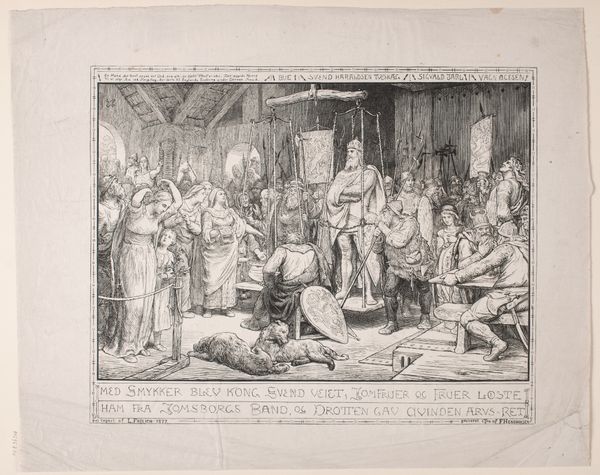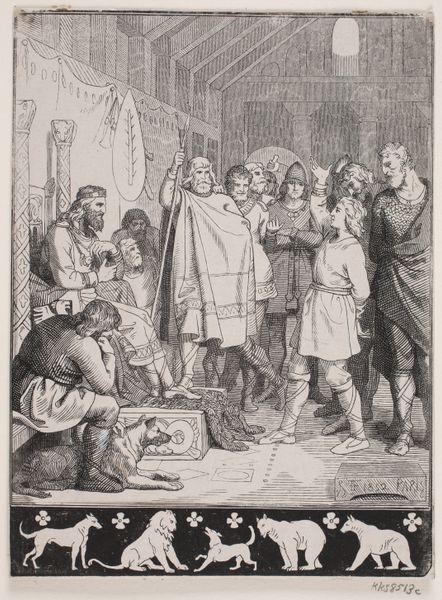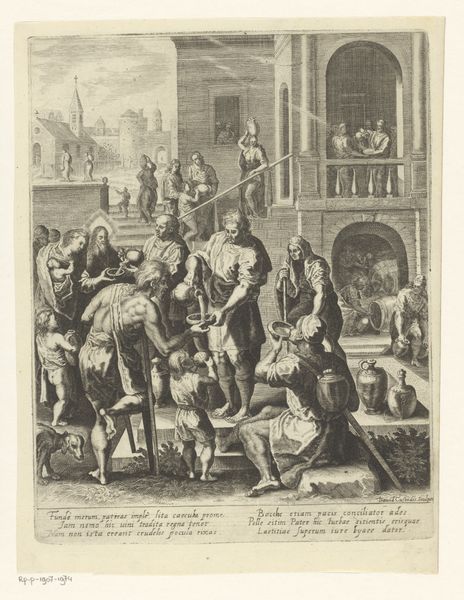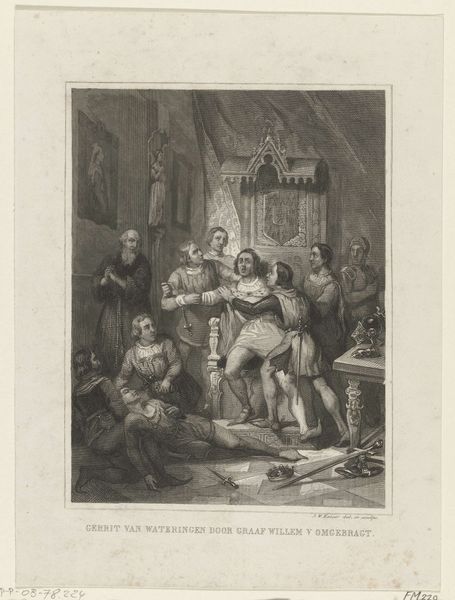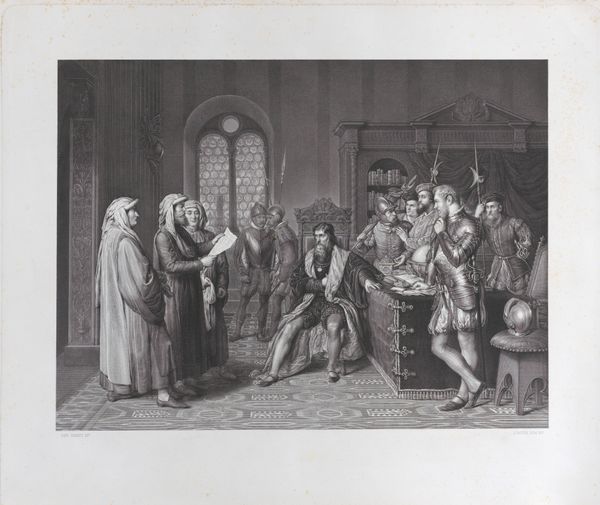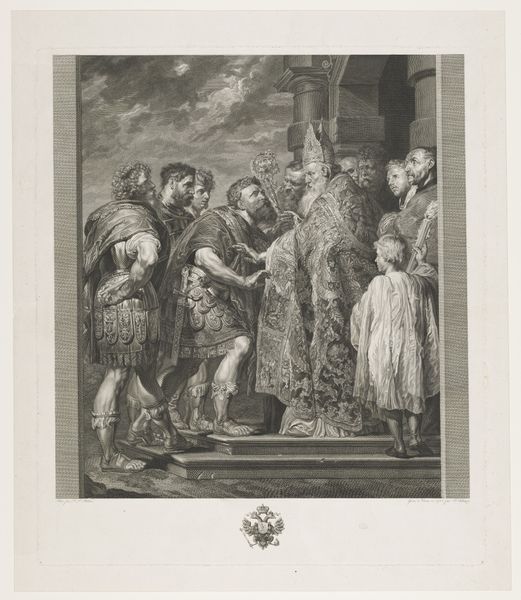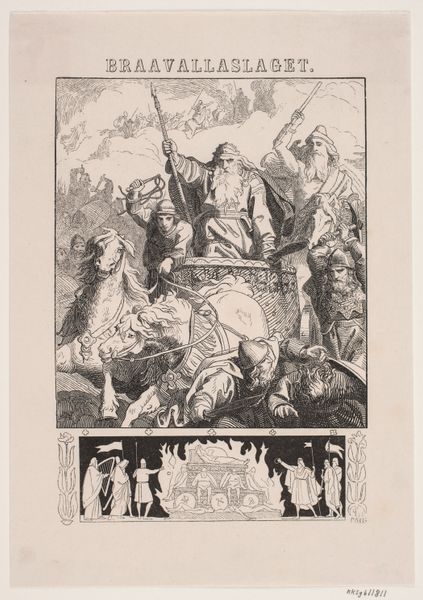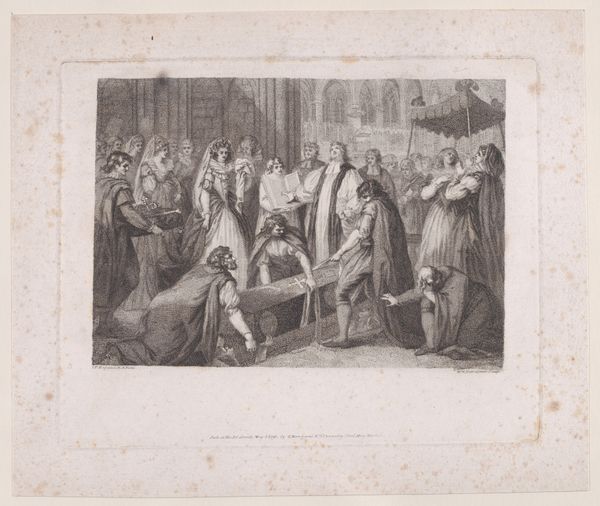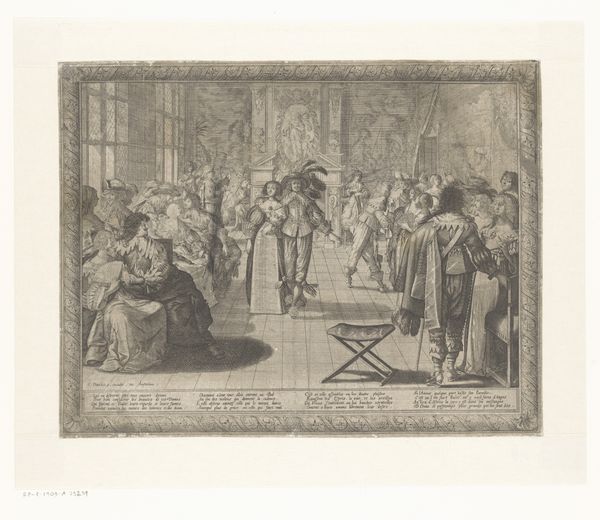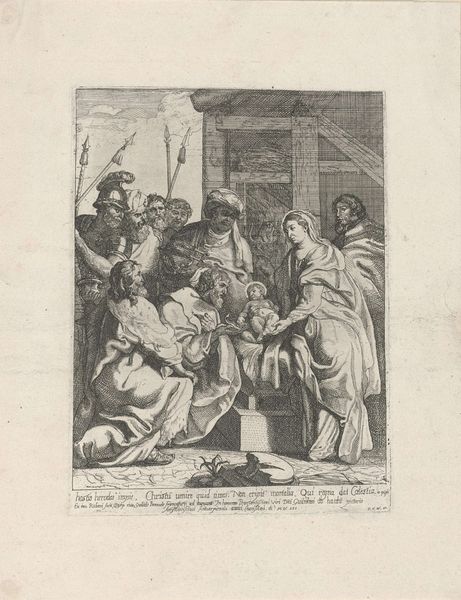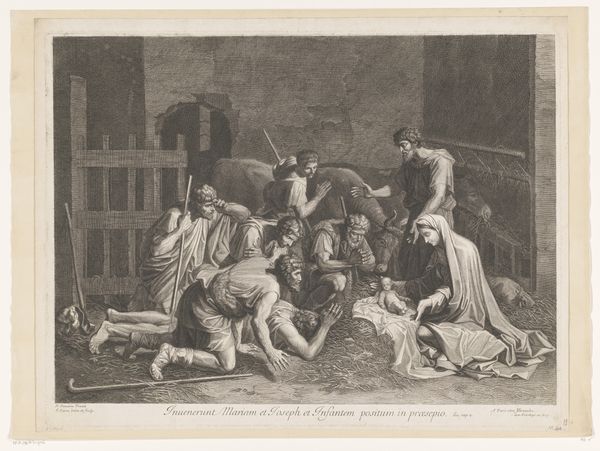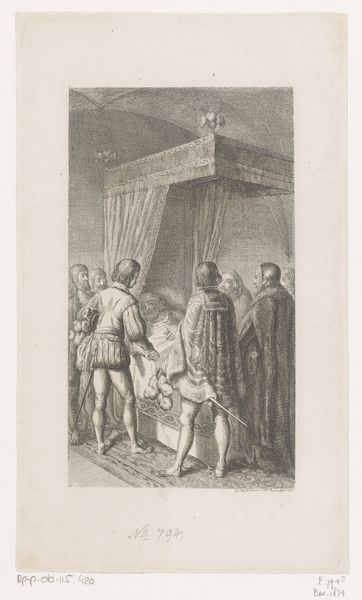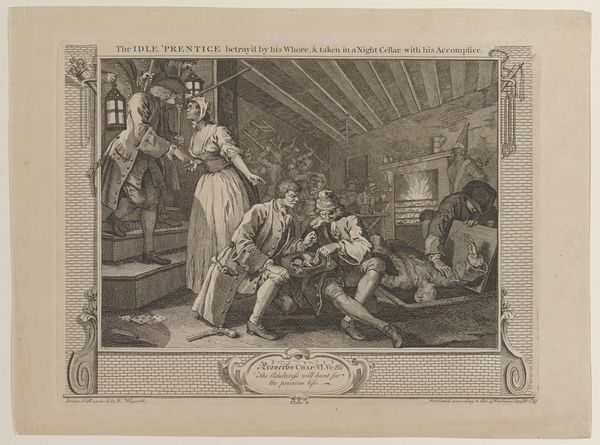
print, woodcut
#
narrative-art
# print
#
figuration
#
woodcut
#
19th century
#
line
#
history-painting
Dimensions: 200 mm (height) x 148 mm (width) (bladmaal)
Curator: Here we have Axel Theodor Kittendorff's woodcut, "Rolf og Viggo," created in 1852. It’s part of the collection here at the SMK. What strikes you first about this image? Editor: It’s incredibly theatrical. All eyes are on the young boy, Viggo, who appears to be passionately declaring something. The expressions and poses are very… pronounced. It almost feels like a staged drama. Curator: Absolutely. The artist seems intent on conveying a specific narrative. You see that framing device he uses – the frieze of animals along the bottom edge? Dogs, lions, even a bear – acting as audience perhaps, or symbols of the values at stake? Editor: They definitely add another layer of storytelling, beyond just the central scene. Animals often represent core values or traits. I'm wondering what virtues, or perhaps warnings, the artist intends with this bestiary… the lion's regal power, the bear's brute force, the dog’s loyalty. Curator: Considering the historical context—mid-19th century—narrative art and history painting were significant. And titles referring to old Norse figures are no accident, they were often used to inspire nationalistic fervor in light of political uncertainties. The piece uses the stark lines of the woodcut technique, and emphasizes line over tone or volume; think of this medium as one way to tell an epic story. Editor: And to spread it around widely! A print such as this could be easily and inexpensively reproduced, taking stories and ideologies directly into homes. You get that clear heroic narrative reinforced visually, lending itself to being easily ‘read’ and shared with an audience, and ultimately furthering that nationalistic fervor you mentioned. The dog motifs and their association with loyalty resonate within the piece itself. Curator: Right, it’s interesting how that simplicity is used to convey quite a loaded message, visually and conceptually. What is your impression overall, having spent a bit more time with this piece? Editor: I appreciate how even with a somewhat idealized representation, Kittendorff manages to tap into enduring archetypes—loyalty, courage, the power of youth standing up for conviction. It acts almost like a medieval tapestry, rendered in accessible print form, giving everyone a stake in the myth.
Comments
No comments
Be the first to comment and join the conversation on the ultimate creative platform.
